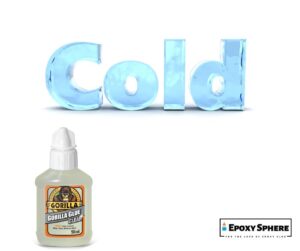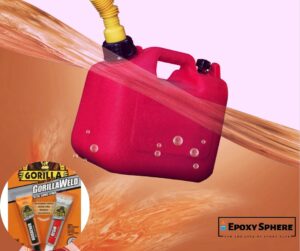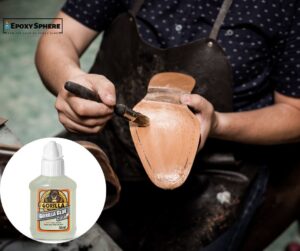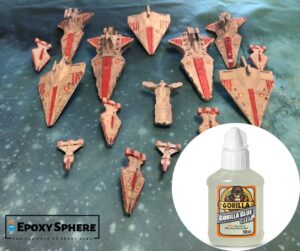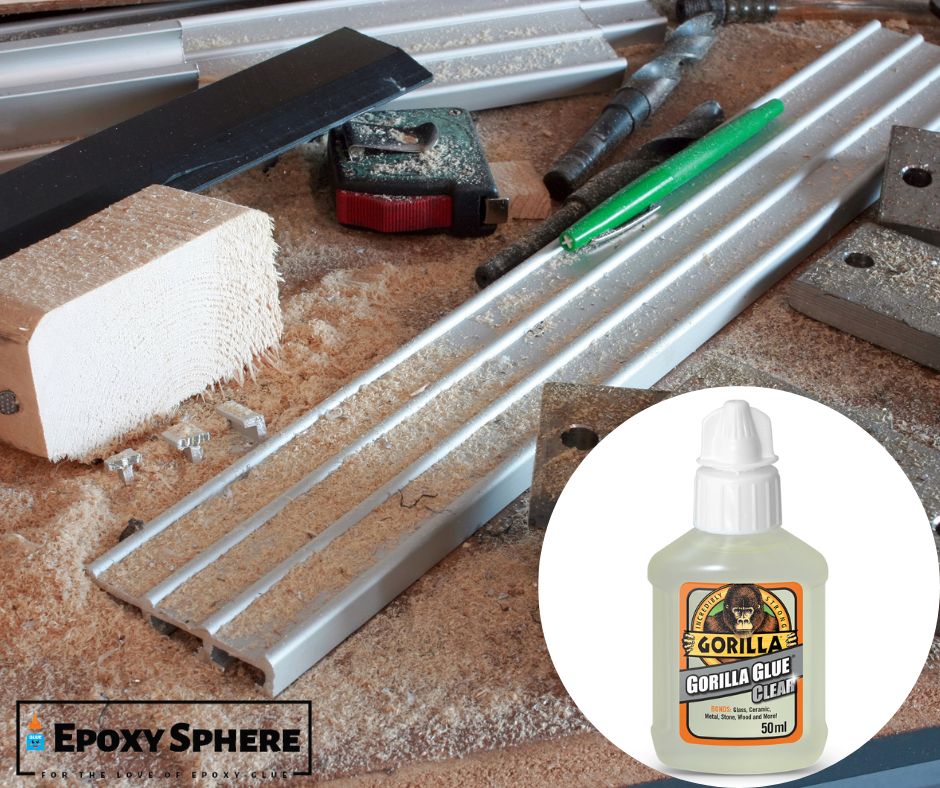
The potency of superglue has to do with its ability to penetrate through the surfaces it bonds. If the glue cannot get inside the little cracks in the surface it’s trying to join, then it can’t stick.
That’s why super glue will work just as well on wood as it does on aluminum when you give it a chance. But that might not seem convincing, which is why people ask; does gorilla glue bond wood to aluminum?
Yes, Gorilla Glue does bond wood to aluminum. They designed this type of adhesive to bond materials with different properties together. These two materials have very different properties, but the adhesive will still hold them together well.
The strength of the bond depends on the amount of pressure you apply while clamping or curing the joint. You should always read any instructions that come with your glue before attempting to use it on your project.
How Does The Bonding Work?
Gorilla Glue works well on wood to aluminum because both materials have surfaces that can hold the glue. The epoxy glue is strong, flexible, and waterproof.
The active ingredient in Gorilla Glue is cyanoacrylate, which makes it a great option for joining metal and wood. Fortunately, Gorilla Glue has been planned specially to work with both types of materials.
The glue forms a strong bond with both metals and wood because it fills in the gaps between the surfaces of two objects.
This creates friction between the two surfaces and allows them to hold together tightly over time. Gorilla Glue bonds quickly, easily, and permanently when allowed to cure properly.
For best results, follow the instructions on the container carefully. You’ll want to make sure that you don’t use too much glue and that you’re working with a clean surface so that your bond will be strong and long-lasting.
How To Bond Wood To Aluminum With Gorilla Glue
When you’re ready to bond wood to aluminum, you want the job done right. One of the most popular bonding products is Gorilla Glue, and it’s easy to see why. It’s strong, fast-drying, and easy to use. Here are the steps for bonding wood to aluminum with Gorilla Glue:
- Clean both surfaces thoroughly before applying any kind of adhesive. Use a paint scraper or steel wool to remove sanding dust from either surface. A clean surface will help ensure a good bond between the two materials.
- Apply a thin layer of the gorilla glue using a trowel or putty knife. Make sure there are no gaps in the glue layer; any gaps will allow moisture into your joint and cause problems later on down the road.
- Allow it to sit for at least 30 minutes before positioning your wood over your aluminum frame (or vice versa). You’ll see that this allows plenty of time for expansion and contraction while curing, which is important because both materials expand and contract at different rates under heat and cold conditions.
How Long Will The Bond Last?
The bond will last as long as the glue is still wet. Once it dries, the bond is permanent. The drying time depends on humidity and temperature.
For example, Gorilla Glue is ready to use in about 5 minutes at 70 degrees Fahrenheit, but it can take up to 24 hours in a cold garage or basement.
If you are using Gorilla Glue for an indoor application, then you can expect the bond to last indefinitely if you take care of it properly. For outdoor applications, we recommend using stronger bonds.
Over time, with normal use, you may notice some separation between your project pieces or joints. This is especially true for projects that see a lot of moisture (like outdoor furniture).
Things To Do To Increase The Longevity Of The Joint
There are some things you need to do for the joint to remain strong and the last long-term:
1. Clean the surfaces
The first thing that you need to do when bonding wood to aluminum with Gorilla Glue is clean both surfaces thoroughly. This removes any dirt or grease from the surface of your pieces, which will help ensure a strong bond between them.
2. Ensure they are dry
After cleaning both surfaces, make sure that they are completely dry before proceeding with your project. If there is any moisture left over after cleaning, then it could compromise the strength of your joint when you apply glue later on in the process.
You should also make sure that the surface of both pieces is free from rust or other contaminants before applying glue because they can prevent a good bond from forming between them.
3. Use less solvent when applying the glue
Solvents are used during mixing because they help facilitate the mixing process and reduce viscosity. However, too much solvent can cause problems when the glue cures.
If there is too much solvent in your mix, it will bleed out from under your joint, leaving little pockets of air in between the two surfaces.
This can cause bubbles in your finished project and weaken the bond between them over time. To avoid this problem, only use as much solvent as necessary when mixing up your batch of Gorilla Glue.
You should be able to see if there is any excess on top of your glue after mixing by looking at how transparent it becomes before pouring it out onto your surface
4. Sand down any rough edges before applying Gorilla Glue
This will ensure that the glue can fully penetrate the surface of both materials and create a strong bond. It’s important to use 80-grit sandpaper or higher for this step because it will help get rid of any contaminants from the surface of your materials.
5. Let it dry overnight before moving the item
When you use Gorilla Glue to bond wood or metal together, it is best to let it dry overnight before moving the joint. If you try moving it too soon, you risk breaking the bond between your materials. Letting it sit overnight allows all the materials to cure together so that they will not break apart when moved or handled.
Will Wood To Aluminum Bond By Gorilla Glue Break Easily?
No, wood to aluminum bond with gorilla glue won’t break easily because Gorilla Glue is made of polyurethane, an extremely strong polymer that when combined with water forms an elastic substance called latex.
This makes it ideal for repairing wood because it acts as a flexible bond between the two materials. When you need to remove the wood from the aluminum, it will take some effort and time for you to do so.
This is because of how strong the bond is between the two materials. This does not mean that there are no risks involved with using Gorilla Glue to bond these two materials together. If you do not follow proper safety precautions when gluing them together, then you could end up hurting yourself or damaging your items beyond repair.
Final Note
So yes, you can use Gorilla Glue to bond wood to aluminum. As long as the surface is clean and free of contaminants, it will stick. But I wouldn’t use it to build deck furniture. That’s what marine-grade epoxies are made for.

Hi, This is John Davis. After years of working in the construction industry, I decided to create a website that would provide people with information about glue and its exceptional uses. I hope You find it useful

